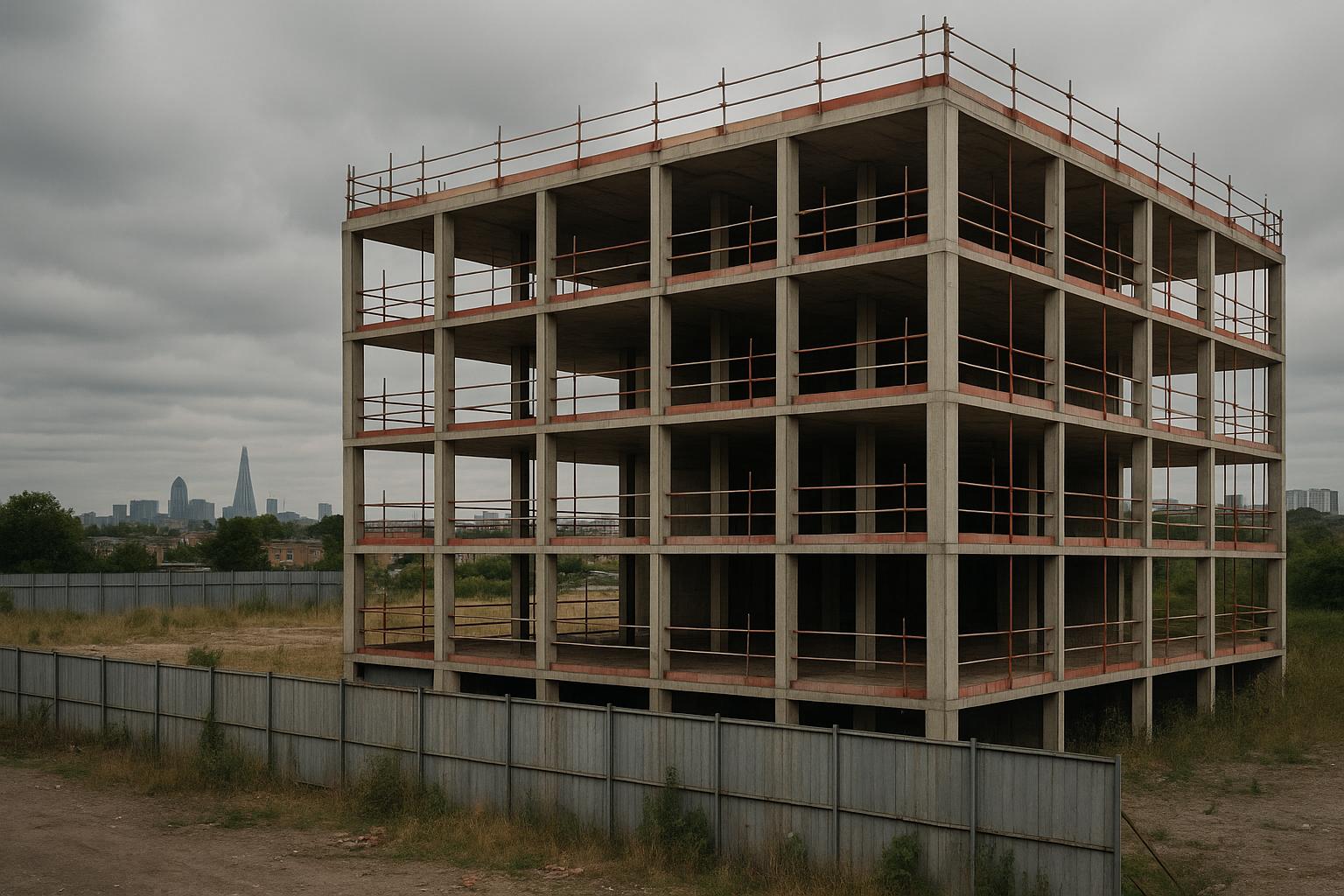London’s affordable housing delivery continues to falter sharply under Mayor Sadiq Khan’s administration, with recent data showing a stark decline in new affordable homes being started across the capital. Figures from the Greater London Authority (GLA) reveal that only 1,239 affordable housing starts occurred between April and September 2024, a dramatic drop compared to the 3,991 starts recorded in the entire previous financial year. This slowdown raises serious questions about the viability of meeting even the recently lowered targets for the Affordable Homes Programme (AHP) 2021-2026, which were cut by over a fifth to a range of 17,800 to 19,000 starts.
To reach these revised goals, developers will need to begin construction on at least 11,430 affordable homes by March 2026, a challenging milestone given the current pace. Since the AHP was agreed upon earlier this year, just 6,370 affordable homes have been commenced, highlighting a growing shortfall that critics say the Mayor has yet to adequately address. Hina Bokhari, Liberal Democrat leader on the London Assembly, described the situation as a “cliff fall” in affordable housebuilding, accusing Khan of lacking a clear strategy to resolve the crisis despite repeated promises. Some boroughs, including Richmond upon Thames, Lambeth, Hackney, and Merton, have not seen any affordable home starts since April 2024, underscoring the uneven distribution of developments across the city.
The number of affordable home completions is also dwindling. For the first half of the 2025-26 period, only 2,904 affordable homes were finished, a marked decrease from 11,636 in 2024-25 and 10,949 the year before. This decline is contributing to an acute housing shortage, evidenced by London statistics showing over 65,000 people living in temporary accommodation and more than 320,000 registered on council waiting lists. Industry and political voices attribute the sluggish progress to a mix of economic pressures, planning delays, and historical underinvestment.
Deputy Mayor for Housing Tom Copley has cited factors such as the war in Ukraine driving up material costs, Brexit-related labour shortages, and high interest rates impacting borrowing and mortgages. He also pointed to the legacy of a decade-long neglect in affordable housing investment that has compounded current challenges. Meanwhile, Labour Assembly member Sem Moema places some responsibility on the previous government and private developers holding onto undeveloped land, calling for prioritising funding for direct affordable housing schemes managed by the Mayor and borough councils.
In efforts to incentivise builders, the GLA and central government recently agreed to reduce the affordable housing quota in new developments from 35% to 20%, offering developers faster planning approval in return. However, this move has sparked debate over whether it further weakens efforts to increase affordable supply. Despite these challenges, the Ministry of Housing, Communities and Local Government (MHCLG) stated its commitment to building 1.5 million new homes nationwide by 2029, backed by significant funding and “emergency measures” to accelerate housebuilding in London and beyond.
National-level data from Homes England present a contrasting picture, showing increased starts and completions of affordable homes across England in the latest half-year and annual reports. For example, between April and September 2024, there were 13,073 affordable housing starts in England, a 12% rise compared to the previous year, and for the 2024-25 financial year, 30,087 affordable housing starts were recorded, comprising nearly 80% of total housing starts. These figures highlight a disparity between broader national progress and the capital's ongoing struggles.
As London confronts mounting pressure from its housing crisis, the Mayor's office has yet to provide a detailed public response to the recent figures or clarify how the administration plans to recover lost ground. Without a robust, coordinated approach, the capital risks falling further behind its affordable housing commitments at a time when demand continues to surge.
📌 Reference Map:
- [1] (MyLondon) - Paragraphs 1, 2, 3, 4, 5, 6, 7
- [2] (GLA) - Paragraph 1, 4
- [3] (Homes England half-year report) - Paragraph 8
- [4] (Homes England annual report) - Paragraph 8
- [5] (Evening Standard) - Paragraphs 1, 3
- [6] (Housing Today) - Paragraph 4
- [7] (Evening Standard) - Paragraph 4
Source: Noah Wire Services
